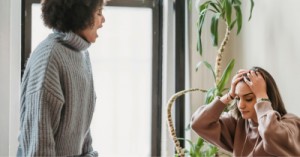A recent report shared by 7NEWS Australia warns of a troubling trend: fewer Australian parents are reading to their children. While the headline sparks concern about declining literacy and emotional development, it risks overlooking a deeper reality—one that goes far beyond the bedtime book ritual.
The Surface Issue: Declining Reading Habits
The data suggests that fewer families are engaging in regular reading routines, a shift linked to:
- Lower literacy preparedness in the early years
- Missed opportunities for emotional bonding
- Gaps in vocabulary development and storytelling confidence
But here’s the question that demands urgent attention: Are we addressing the symptoms instead of the system?
The Systemic Truth: Barriers Behind the Bookshelf
Families aren't simply choosing not to read. Many faces:
- Overstretched schedules, insecure work, and rising cost-of-living pressures
- Lack of access to inclusive, culturally relevant materials
- Low confidence due to limited literacy exposure themselves
Educators, too, are impacted. Amid ratio pressures, administrative overload, and compliance demands, meaningful literacy engagement often gets reduced to checkbox programming—rather than emotionally connective, trauma-informed practice.
Reading as a Protective Practice
At its best, shared reading:
- Builds language fluency and emotional scaffolding
- Models empathy through narrative and character conflict
- Offers safe metaphors for exploring identity, trauma, and relationships
This isn’t just about books. It’s about connection. Predictability. Safety. And every missed reading moment isn’t merely a skipped story—it’s a gap in the child’s sense of relational security.
Effective Literacy Practices That Protect, Empower & Connect
1. Micro-Literacy Moments
Not every story needs a book and a quiet circle. Try:
- Reading print off signage, recipes, or labels in real time
- Narrating routines (“Now we’re washing the apples…”)
- Capturing fleeting engagement with song lyrics, chants, or character dialogue
These reinforce print awareness, sequencing, and relational language in context—critical for children with fragmented learning histories.
2. Emotionally Scaffolded Reading
Model emotional literacy by:
- Picking texts with conflict resolution, self-advocacy, or fear processing
- Using character emotions to talk about real-life experiences
- Reading with tone, gesture, and predictable storytelling rhythms that help regulate nervous systems
Especially for trauma-impacted children, this turns storytime into emotional co-regulation.
3. Culturally Responsive Literacy
Ditch tokenistic book displays. Instead:
- Include non-English texts, oral storytelling, visual narratives, and community-contributed materials
- Recognize family literacies like songlines, kinship mapping, and everyday instruction
- Let children’s identities shape the learning, not just decorate it
This transforms reading from a colonial practice into a relational invitation.
4. Multimodal Literacy Engagement
Expand the definition of “reading” to include:
- Roleplay and dramatic retellings
- Visual storyboards and child-led narration
- Symbol-supported texts for children with disabilities or EAL backgrounds
You’re not just building literacy—you’re protecting agency.
Reference:
Fewer Aussie Parents Reading To Their Kids, Research Reveals







 As an Educator in Australia, your pay rate falls under the Children’s Services Award 2010. This award states the minimum amount that an employer can
As an Educator in Australia, your pay rate falls under the Children’s Services Award 2010. This award states the minimum amount that an employer can When working as a qualified Early Childhood Teacher (with a university degree) within a service, your rate of pay will come from the Educational Services
When working as a qualified Early Childhood Teacher (with a university degree) within a service, your rate of pay will come from the Educational Services When working as a Diploma Qualified Educator your pay rate is from the Children's Services Award 2010. This Award states your minimum rate of pay
When working as a Diploma Qualified Educator your pay rate is from the Children's Services Award 2010. This Award states your minimum rate of pay When working as a Cert 3 Qualified Educator, your pay rate is from the Children's Services Award 2010. This Award states your minimum rate of
When working as a Cert 3 Qualified Educator, your pay rate is from the Children's Services Award 2010. This Award states your minimum rate of Educational Leaders play a crucial role in their early childhood service by ensuring that the educational program aligns with best practices and supports the holistic
Educational Leaders play a crucial role in their early childhood service by ensuring that the educational program aligns with best practices and supports the holistic In early childhood education and care, ratios are more than a technicality—they are a frontline safeguard. Every child deserves responsive supervision, emotional connection, and developmental
In early childhood education and care, ratios are more than a technicality—they are a frontline safeguard. Every child deserves responsive supervision, emotional connection, and developmental With the new national child safety reforms kicking in on 1 September 2025, early childhood services like yours have a real opportunity to lead the
With the new national child safety reforms kicking in on 1 September 2025, early childhood services like yours have a real opportunity to lead the Here’s a comprehensive Mobile Phone and Smart Watch Policy tailored for early childhood education and care (ECEC) services in Australia, aligned with the latest 2025
Here’s a comprehensive Mobile Phone and Smart Watch Policy tailored for early childhood education and care (ECEC) services in Australia, aligned with the latest 2025 The Sea of Fish Challenge is a national initiative that invites children, educators, families, and communities to create and display fish artworks as a symbol
The Sea of Fish Challenge is a national initiative that invites children, educators, families, and communities to create and display fish artworks as a symbol Across the early childhood education and care sector, educators are sounding the alarm: current staffing ratios are insufficient to deliver safe, meaningful, and developmentally appropriate
Across the early childhood education and care sector, educators are sounding the alarm: current staffing ratios are insufficient to deliver safe, meaningful, and developmentally appropriate


